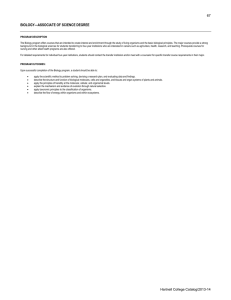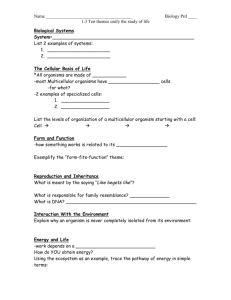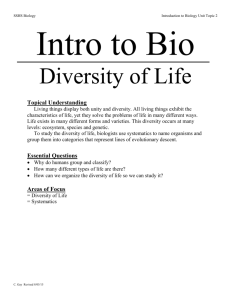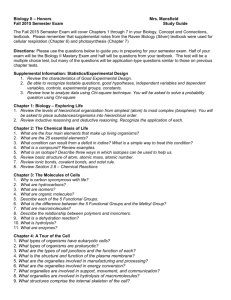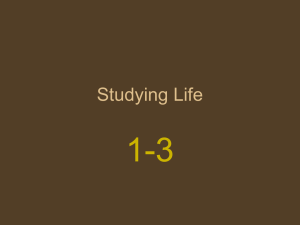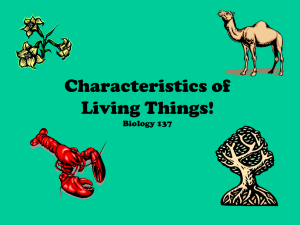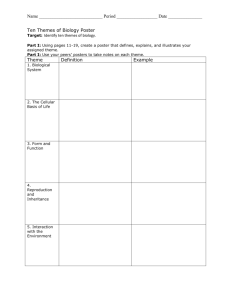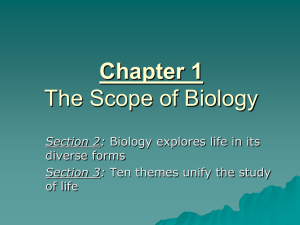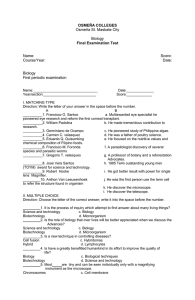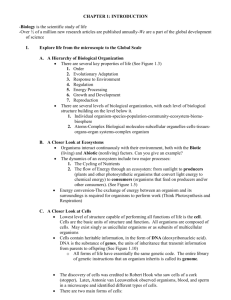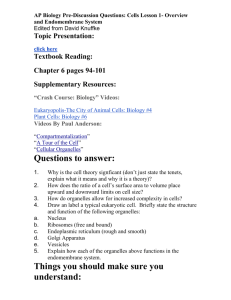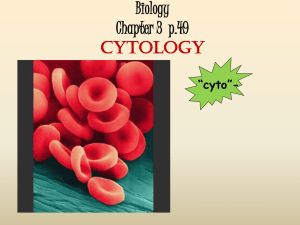What is Biology? - Odyssey Charter School
advertisement
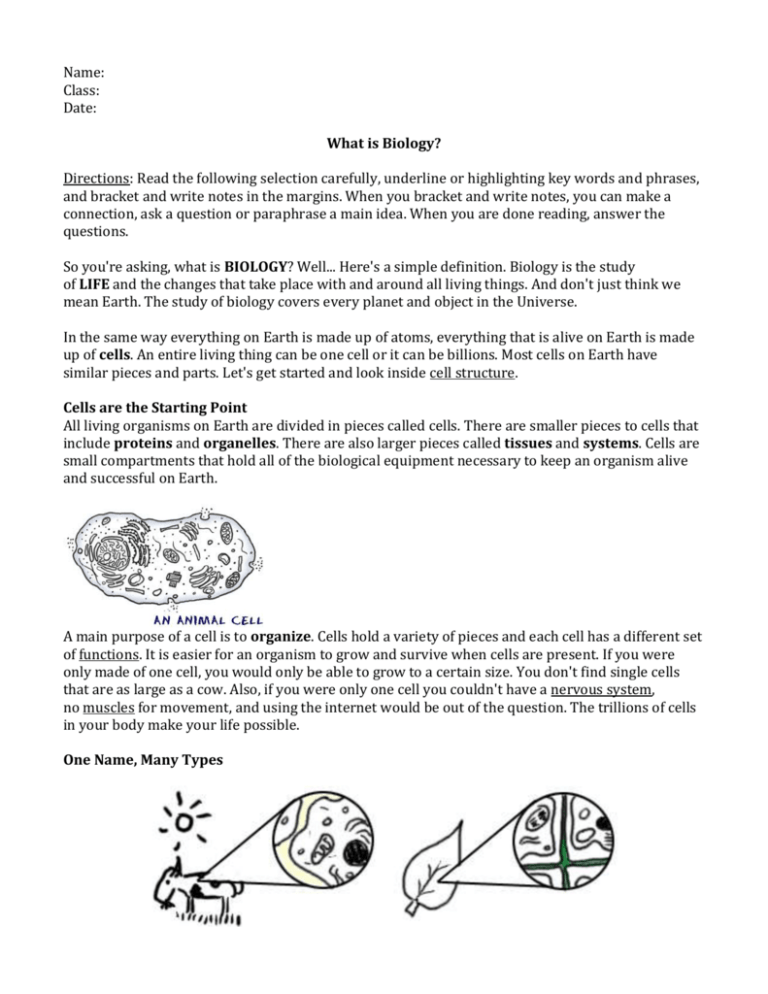
Name: Class: Date: What is Biology? Directions: Read the following selection carefully, underline or highlighting key words and phrases, and bracket and write notes in the margins. When you bracket and write notes, you can make a connection, ask a question or paraphrase a main idea. When you are done reading, answer the questions. So you're asking, what is BIOLOGY? Well... Here's a simple definition. Biology is the study of LIFE and the changes that take place with and around all living things. And don't just think we mean Earth. The study of biology covers every planet and object in the Universe. In the same way everything on Earth is made up of atoms, everything that is alive on Earth is made up of cells. An entire living thing can be one cell or it can be billions. Most cells on Earth have similar pieces and parts. Let's get started and look inside cell structure. Cells are the Starting Point All living organisms on Earth are divided in pieces called cells. There are smaller pieces to cells that include proteins and organelles. There are also larger pieces called tissues and systems. Cells are small compartments that hold all of the biological equipment necessary to keep an organism alive and successful on Earth. A main purpose of a cell is to organize. Cells hold a variety of pieces and each cell has a different set of functions. It is easier for an organism to grow and survive when cells are present. If you were only made of one cell, you would only be able to grow to a certain size. You don't find single cells that are as large as a cow. Also, if you were only one cell you couldn't have a nervous system, no muscles for movement, and using the internet would be out of the question. The trillions of cells in your body make your life possible. One Name, Many Types There are many types of cells. In biology, you will usually work with plant-like cells and animallike cells. We say animal-like because an animal type of cell could be anything from a tiny microorganism to a nerve cell in your brain. Plant cells are easier to identify because they have a protective structure called a cell wall made of cellulose. Plants have the wall; animals do not. Plants also have organelles like the chloroplast (the things that make them green) or large waterfilled vacuoles. We said that there are many types of cells. Cells are unique to each type of organism. Humans may have hundreds of types of cells. Some cells are used to carry oxygen (O2) through the blood (red blood cells) and others might be specific to the heart. If you look at very simple organisms, you will discover cells that have no defined nucleus (prokaryotes) and other cells that have hundreds of nuclei (multinucleated). The thing they all have in common is that they are compartments surrounded by some type of membrane. Answer the following questions after carefully reading and taking notes: 1. What is biology? 2. What do all living organisms have in common? 3. What is the main purpose of a cell? 4. What are the two main types of cells? 5. What are two things that plant cells have that animals cells DO NOT have? 6. How many different types of cells do humans have? 7. What do all cells have in common?
